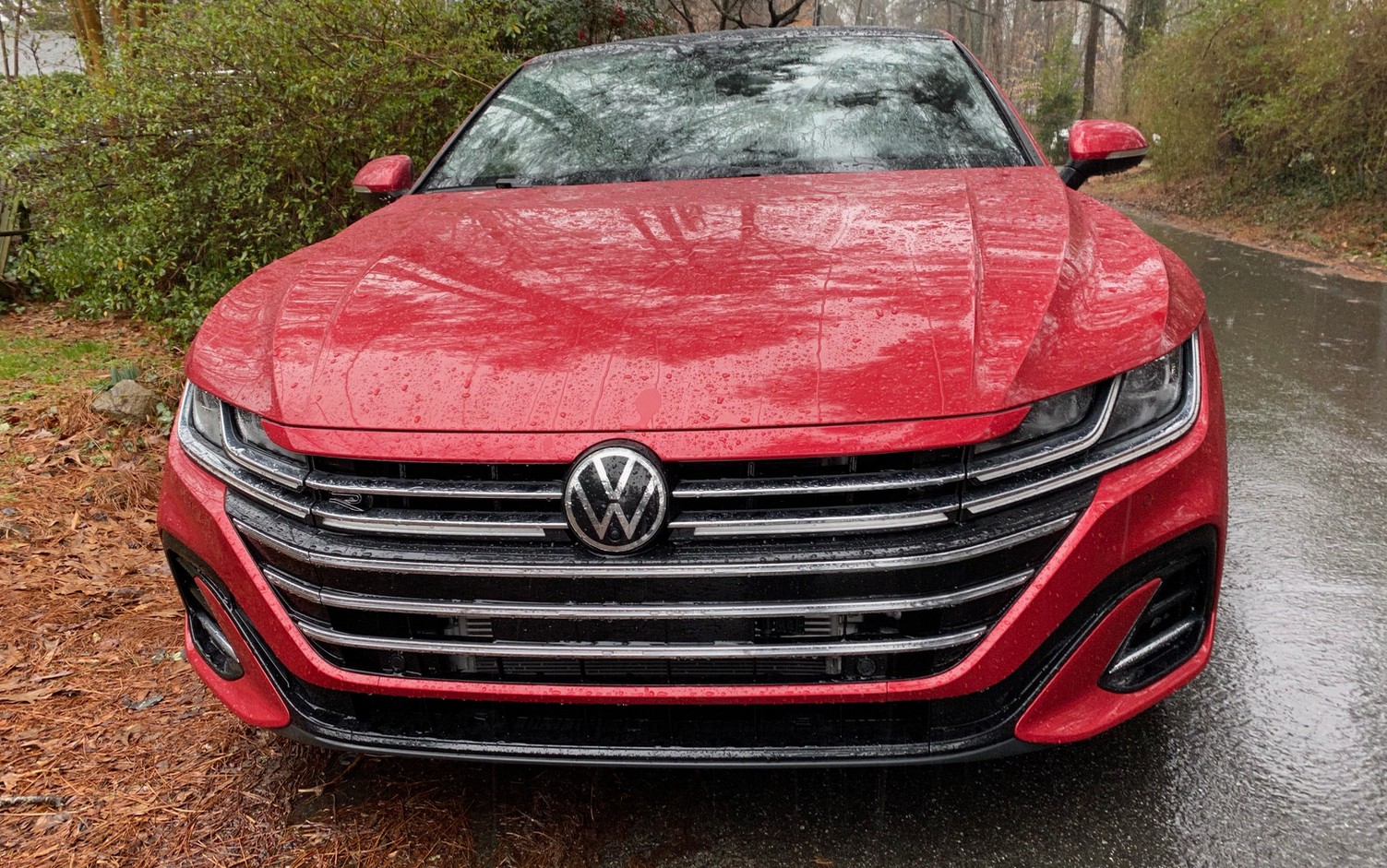It’s often said that pictures don’t fully capture the essence of a car, and with the Volkswagen Arteon, this couldn’t be truer. To truly appreciate the Arteon, particularly when considering alternatives like the Volkswagen Passat, you need to see it in person. Its proportions and dimensions are key to understanding its impact. It’s surprisingly wider and lower than you might expect, giving it a poised, almost predatory stance, ready to pounce.
The front end design of the Arteon immediately sets it apart from the more traditionally styled Passat. The wide grille and the striking horizontal bars, seamlessly integrating into the lighting elements, amplify the car’s width. The expansive hood appears low and substantial, a welcome contrast to the high-riding crossovers and SUVs that dominate roads today. The sharp, arcing lines lend it an almost aquatic, streamlined feel, unlike anything in the standard Volkswagen lineup, including the Passat.
The hood itself is a noteworthy detail, a feature less common in modern vehicles. It’s supported by gas struts, a premium touch often absent in mainstream cars, providing a smoother, more sophisticated operation than the typical prop rod. The clamshell design is also practical, protecting the fender tops from scratches during engine work, a thoughtful detail that speaks to the Arteon’s design-conscious approach, elevating it beyond the more functional Passat.
Moving to the profile, the Arteon continues to impress. It’s long and sleek, with a gracefully arcing roofline that gives it a coupe-like silhouette, a departure from the more conventional sedan shape of the Passat. The wheel size is proportionally generous, enhancing the car’s dramatic presence. While the 19-inch wheels pictured might not appeal to everyone, they contribute to the Arteon’s bold and assertive character, making a stronger visual statement than typically found on a Passat.
The Arteon’s design is further enhanced by thoughtful details, particularly in the lighting. The full-width front lightbar and the innovative use of the inner L-shaped grille bar sections as indicators demonstrate a cohesive and modern design language. Similar visual themes are echoed in the taillights, creating a unified and sophisticated aesthetic that distinguishes the Arteon from the more understated styling of the Passat. Overall, the Arteon’s design prioritizes impactful forms over intricate details, achieving a striking and memorable look.
The rear quarter view of the Arteon is particularly compelling. From this angle, the pronounced rear haunches over the wheel arches become apparent. These sculpted forms, subtle in profile, add significant visual weight and presence, firmly grounding the car’s stance when viewed from off-angles. This adds a muscularity and dynamism not typically associated with the Passat, showcasing the Arteon’s more expressive design.
The taillight design is also strong and distinctive. While the pictured lights are effective, the Euro-spec versions, featuring amber rear indicators, are arguably a more functional and visually appealing choice. This subtle difference highlights Volkswagen’s global design considerations, and perhaps a slight edge in design detail for the European market Arteon compared to its Passat counterpart.
Despite the Arteon’s low roofline, which can sometimes lead to a cramped interior, the cabin feels surprisingly spacious. The dramatically raked rear hatch with its large window, combined with the panoramic glass roof in this model, creates an airy and open atmosphere. This expansive feeling is unexpected given the car’s sleek exterior, and a welcome contrast to interiors that can feel more confined, even in larger sedans like the Passat.
The prevalence of panoramic glass roofs in modern cars is a genuinely appreciated feature. It significantly enhances the interior experience, bringing in natural light and creating a greater sense of spaciousness. Stepping inside the Arteon truly reveals its appeal, and from there, the driving experience is the next aspect to explore, but first, the design itself has already made a powerful statement, positioning it as a visually striking alternative to the more conventional Volkswagen Passat.
